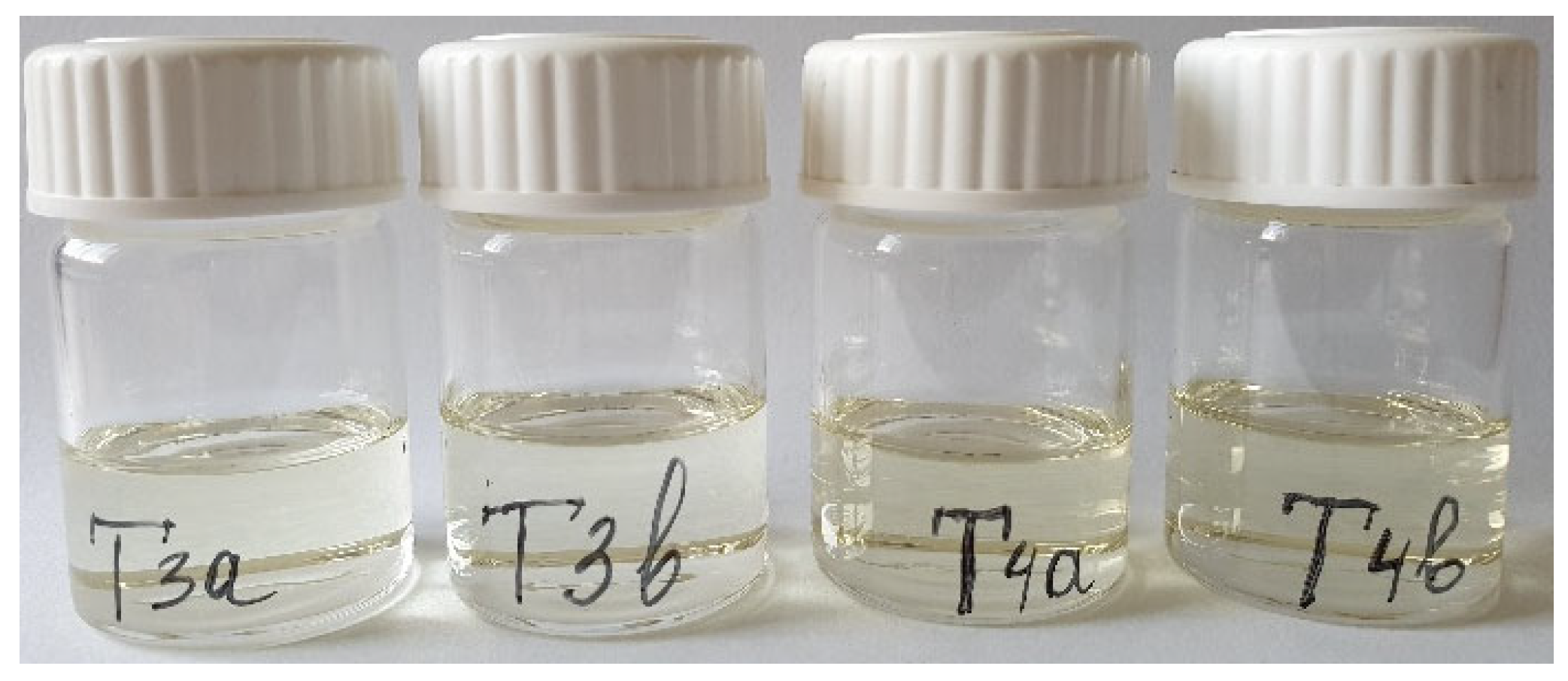Preparation and Characterization of Vegetable Oil-Based Microemulsions †
Funding
References
- Mehta, D.; Rathod, H.; Shah, D.; Shah, C. A Review on Microemulsion Based Gel: A Recent Approach for Topical Drug Delivery System. Res. J. Pharm. Technol. RJPT 2015, 8, 118–126. [Google Scholar] [CrossRef]
- Sandra, H.; Alexandra, G.; Reinhard, H.H.N. Microemulsions—Modern Colloidal Carrier for Dermal and Transdermal Drug Delivery. J. Pharm. Sci. 2008, 97, 603–631. [Google Scholar]

© 2019 by the authors. Licensee MDPI, Basel, Switzerland. This article is an open access article distributed under the terms and conditions of the Creative Commons Attribution (CC BY) license (https://creativecommons.org/licenses/by/4.0/).
Share and Cite
Scomoroscenco, C.; Cinteza, L.O.; Teodorescu, M.; Gifu, I.C.; Ianchis, R.; Nistor, C.L.; Petcu, C.; Ninciuleanu, C.M.; Alexandrescu, E.; Mihaescu, C.I. Preparation and Characterization of Vegetable Oil-Based Microemulsions. Proceedings 2019, 29, 74. https://doi.org/10.3390/proceedings2019029074
Scomoroscenco C, Cinteza LO, Teodorescu M, Gifu IC, Ianchis R, Nistor CL, Petcu C, Ninciuleanu CM, Alexandrescu E, Mihaescu CI. Preparation and Characterization of Vegetable Oil-Based Microemulsions. Proceedings. 2019; 29(1):74. https://doi.org/10.3390/proceedings2019029074
Chicago/Turabian StyleScomoroscenco, Cristina, Ludmila Otilia Cinteza, Mircea Teodorescu, Ioana Catalina Gifu, Raluca Ianchis, Cristina Lavinia Nistor, Cristian Petcu, Claudia Mihaela Ninciuleanu, Elvira Alexandrescu, and Catalin Ionut Mihaescu. 2019. "Preparation and Characterization of Vegetable Oil-Based Microemulsions" Proceedings 29, no. 1: 74. https://doi.org/10.3390/proceedings2019029074
APA StyleScomoroscenco, C., Cinteza, L. O., Teodorescu, M., Gifu, I. C., Ianchis, R., Nistor, C. L., Petcu, C., Ninciuleanu, C. M., Alexandrescu, E., & Mihaescu, C. I. (2019). Preparation and Characterization of Vegetable Oil-Based Microemulsions. Proceedings, 29(1), 74. https://doi.org/10.3390/proceedings2019029074








